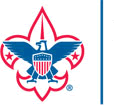Requirement 6
6. Describe to your counselor how certain orders of birds are uniquely adapted to a specific habitat. In your description, include characteristics such as the size and shape of the following:
a. Beak
b. Body
c. Leg and foot
d. Feathers/plumage
Beaks are especially good examples of specialized adaptation. A red-tailed hawk’s beak is hooked and sharp for tearing meat. A duck, such as a pintail or shoveler, has a wide, flat bill that is lined along the inner edge with tiny, comblike teeth for filtering seeds and minute animals from the water. Woodpeckers have chisellike bills for hammering through wood for bugs, which they spear with their long, barbed tongues. Long-billed curlews have thin, curved beaks for plucking insects from deep underground.
Similarly, there is plenty of variation in bird’s feet and legs. Most songbirds have slender feet with short, curved nails for grasping twigs. A hummingbirds feet are so small that it cannot walk, only perch. To move even a little, a hummingbird must take off and land again. Raptors, such as hawks and owls, have strong feet with long, sharp claws called talons, which they use to catch and kill their food. Woodpecker claws are strong and sharp, too, so the bird can cling to the side of a tree, using its tail as a brace.
Soaring birds, such as vultures, cranes, and hawks, have wide wings, for example. Fast species, such as swifts and falcons, have long, pointed wings.


